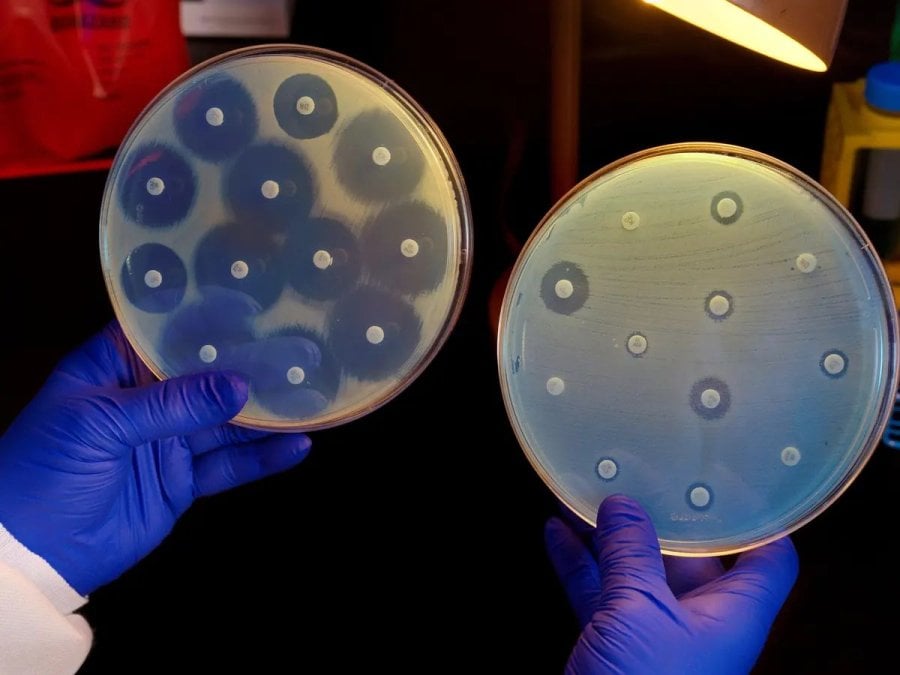
As the latest OECD report on AMR finds antibiotic stewardship as one of the key interventions to prevent AMR, it seems timely to go back to basics – how do antibiotic actually drive antibiotic resistance? A recent review of the collateral damage done by antibiotics to the microbiome, that leads to subsequent infection, gives a great overview of the processes by which antibiotics actually affect the bacterial populations we carry.
They talk to two main processes: antibiotic therapy can either (1) cause the loss of protective colonisation leading to successful introduction, following transmission, of resistant bacteria, or (2) it leads to the overgrowth of resistance microorganisms in the microbiome. Endogenous infection with resistant bacteria can than happen by translocation. Strikingly, there is still little evidence of these effects in many important niche microbiomes (e.g. skin and vagina) and whether, for different populations (such as by age and across genders) and different antibiotic-bacteria combinations, this balance of endogenous vs exogenous infection changes. Does it depend on our definition and quantification of colonisation? Or on the pathway through healthcare and antibiotic exposure that a patient has experienced?
Determining the importance of such mechanisms of antibiotic exposure can be explored using mathematical models. One such study from earlier this year, looked at the potential impacts of shortening antibiotic treatment. Using three stochastic model structures some of the underlying processes of bacterial carriage and antibiotic effects were captured with the finding that, in line with some of the processes from the above review, treatment shortening may not always reduce resistance. However, shortening treatment would likely have a bigger impact on resistance reduction in high transmission settings pointing to the complex dynamics of the interplay between selection and transmission.
How this plays out for individual antibiotics and bacteria is still unknown, as highlighted by parameter uncertainty in the modelling paper. What is likely, and was acutely highlighted again recently, in the 2022 Veterinary Antimicrobial Resistance and Sales Surveillance (VARSS) report from the UK government, was the importance of preventing resistance appearing – despite total veterinary antibiotic sales being the lowest yet recorded, a huge reduction in fluroquinolone use has not (yet) been linked to a reduction in fluroquinolone resistance in campylobacter in poultry.
It’s complex to preserve these vital resources and, as always, more data is needed, particularly on how antibiotics actually drive AMR. Watch out for the AMR Centre World Antimicrobial Awareness Week focus on data next week – we’ll be trying to find out what AMR experts think are the priorities for data collection and how they can be used to answer questions linking these fundamental effects with the clinical decision making they inform.
Our postgraduate taught courses provide health practitioners, clinicians, policy-makers, scientists and recent graduates with a world-class qualification in public and global health.
If you are coming to LSHTM to study a distance learning programme (PG Cert, PG Dip, MSc or individual modules) starting in 2024, you may be eligible for a 5% discount on your tuition fees.
These fee reduction schemes are available for a limited time only.
